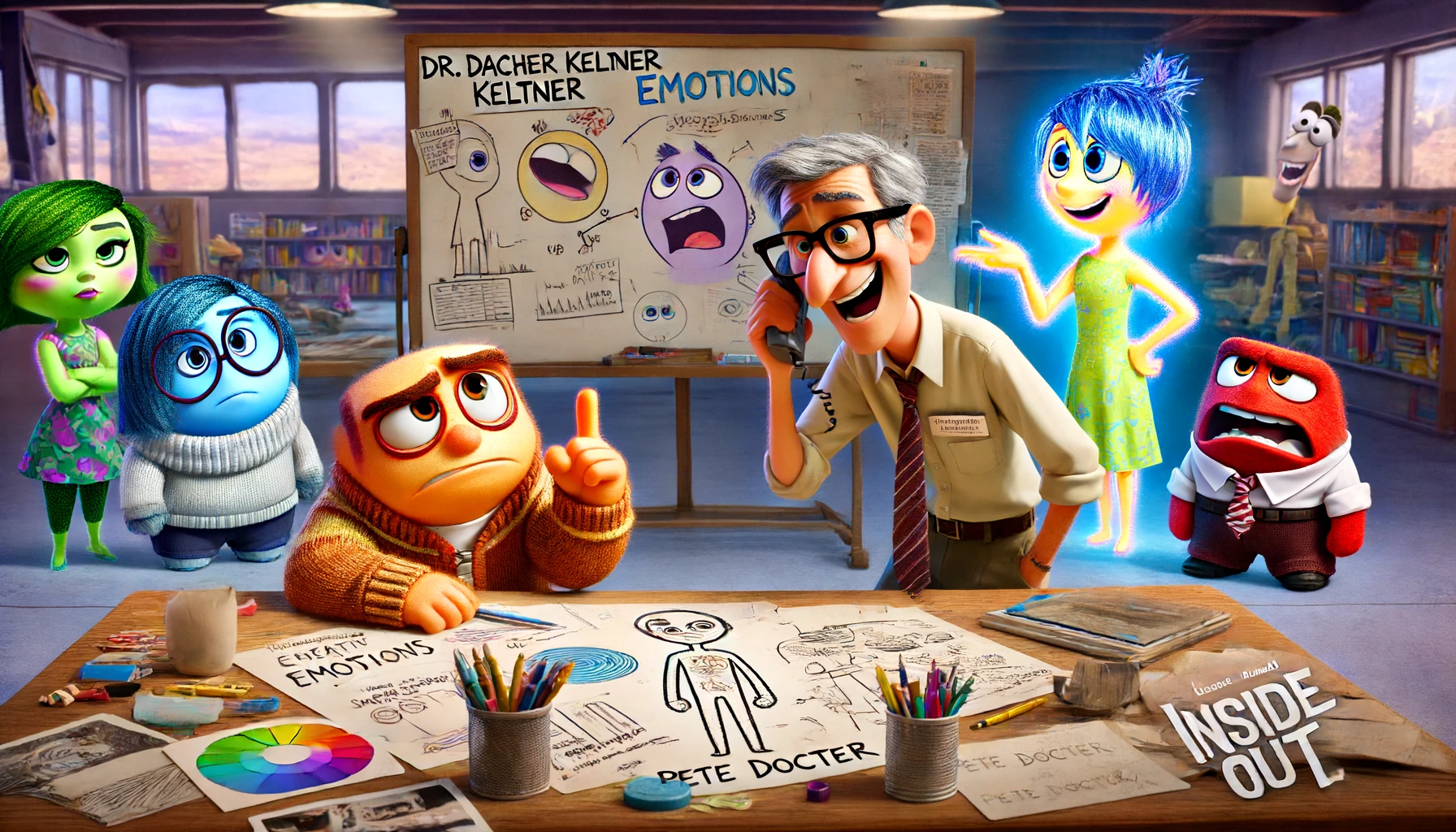In 2015, Pixar’s “Inside Out” introduced audiences to 11-year-old Riley and the five core emotions operating in the headquarters of her brain: Joy, Fear, Sadness, Anger, and Disgust. By the end of the movie, Riley received a new control console in her brain labeled “Puberty.” Now, in the highly anticipated sequel “Inside Out 2,” Riley is 13, and puberty has indeed proven to be important, bringing four new emotions into the mix: Envy, Embarrassment, Ennui, and Anxiety. These new characters are voiced by a star-studded cast, including Ayo Edibiri, Paul Walter Houser, Adèle Exarchopoulos, and Maya Hawke.
Adding New Emotions
In “Inside Out 2,” the filmmakers have expanded the emotional landscape of Riley’s mind to reflect the complexities of teenage life. The new emotions are designed to be visually distinctive and thematically relevant:
- Envy is depicted as aquamarine and tiny with sparkling big eyes, symbolizing the feelings of desire for what others have.
- Embarrassment is large, bright red, and often unsuccessfully hides behind a hoodie, embodying the awkwardness of teenage self-consciousness.
- Ennui, a French-accented character, represents boredom and is portrayed as a limp noodle who exudes disinterest.
- Anxiety has frazzled hair and arms full of baggage, reflecting the overwhelming nature of this emotion.
The Science Behind the Characters
The film’s commitment to accurately representing emotions extends beyond animation. Dr. Dacher Keltner, a Stanford graduate and Berkeley professor, served as a consultant for both the original film and its sequel. Dr. Keltner, along with psychologists Paul Ekman and Lisa Damour, ensured that the portrayal of emotions was grounded in real neuroscience. Dr. Keltner describes his role as making sure the film’s creative story about the voices inside a kid’s brain reflects actual, factual neuroscience.
Consulting the Experts
Dr. Keltner’s collaboration with Pixar began when writer-director Pete Docter reached out to him after watching recordings of his human emotion course. Keltner admits that he initially struggled to imagine how a movie could capture the technical complexities of the brain. However, through discussions and consultations, they managed to create a film that not only entertains but also educates.
Why Emotions Matter
Dr. Keltner explains the significance of each emotion introduced in the sequel:
- Embarrassment: This emotion helps individuals navigate social norms. The blush that accompanies embarrassment signals to others that a person recognizes a social mistake, making it easier to be forgiven.
- Envy: Envy arises when someone desires what another person has. While it can lead to negative actions, such as undermining others, it can also motivate individuals to improve themselves.
- Anxiety: Unlike Fear, which responds to immediate dangers, Anxiety is concerned with potential future threats. This emotion prepares individuals for challenges, though it can be overwhelming.
- Ennui: Boredom, represented by Ennui, can drive creativity and help individuals understand what truly matters to them. It signals when it is time to engage in something new and meaningful.
Reflecting Teenage Complexity
The new characters in “Inside Out 2” reflect the increased social awareness and complexity of teenage emotions. Dr. Keltner notes that teenagers become very self-conscious and sensitive to others’ opinions, leading to the emergence of more social emotions like Anxiety, Envy, and Embarrassment.
The Future of Emotional Exploration
Looking ahead, Dr. Keltner speculates on what emotions might be introduced if there were to be an “Inside Out 3.” As Riley grows older, emotions such as Indignation, Awe, Desire, and Compassion could play a significant role. These emotions are crucial for understanding moral and social aspects of life, which become more prominent during late adolescence.
Personal Insights and Real Experiences
Dr. Keltner shared personal insights during his consultation, drawing from his own experiences with emotions like anxiety and panic attacks. He believes that accepting emotions is the first step toward managing them, a lesson that “Inside Out 2” aims to impart to its audience.
This article is based on the following article:
https://time.com/6987825/inside-out-2-neuroscience

Background Information
1. Pixar Animation Studios Pixar Animation Studios is a well-known American film studio that specializes in computer-animated films. Pixar began as a division of Lucasfilm before being acquired by Apple co-founder Steve Jobs, and later by The Walt Disney Company. Some of Pixar’s most famous films include “Toy Story,” “Finding Nemo,” “The Incredibles,” and “Inside Out.” Pixar is renowned for its innovative animation technology, compelling storytelling, and emotional depth in its films.
2. The Original “Inside Out” (2015) “Inside Out” is a Pixar animated film that was released in 2015. The film explores the emotions inside the mind of an 11-year-old girl named Riley, who moves to a new city with her family. The core emotions—Joy, Sadness, Anger, Fear, and Disgust—are personified as characters who help Riley navigate her feelings during this transition. The film was praised for its imaginative portrayal of emotions and its ability to explain complex psychological concepts in a way that is accessible to both children and adults.
3. Emotions and the Brain Emotions are complex psychological states that involve a range of feelings, thoughts, and behaviors. In the context of “Inside Out,” emotions are shown as characters that influence Riley’s actions and reactions. Here are the five core emotions from the original film:
- Joy: Represents happiness and positivity.
- Sadness: Represents sorrow and helps Riley process difficult experiences.
- Anger: Represents frustration and helps Riley stand up for herself.
- Fear: Represents caution and keeps Riley safe from harm.
- Disgust: Represents aversion and protects Riley from things that are unpleasant or harmful.
4. The Concept of Puberty Puberty is a developmental stage where children undergo physical and emotional changes as they transition into adolescence. This period is marked by the development of secondary sexual characteristics, growth spurts, and significant changes in the brain that affect emotions and behavior. Puberty typically begins between the ages of 8 and 13 for girls and 9 and 14 for boys.
5. Neuroscience and Emotions Neuroscience is the scientific study of the nervous system, including the brain. Neuroscientists explore how the brain works, how it controls behavior, and how it processes emotions. In “Inside Out 2,” the filmmakers consulted neuroscientists to ensure that the portrayal of emotions and their interactions in the brain is scientifically accurate.
6. The Role of Consulting Experts Dr. Dacher Keltner, a professor of psychology at the University of California, Berkeley, specializes in the study of emotions. He served as a consultant for both “Inside Out” and “Inside Out 2,” helping the filmmakers depict emotions in a way that reflects real scientific understanding. Psychologists Paul Ekman and Lisa Damour also contributed their expertise to ensure the film’s accuracy.
7. The New Emotions in “Inside Out 2” The sequel introduces four new emotions that are particularly relevant to teenagers:
- Envy: The feeling of wanting what others have.
- Embarrassment: The discomfort felt when one believes they have made a social mistake.
- Ennui: A sense of boredom and lack of interest, often expressed as indifference.
- Anxiety: The feeling of worry or fear about potential future events.
8. The Importance of Emotions Emotions play a crucial role in how individuals interact with the world and with others. They help people respond to challenges, build relationships, and understand their own experiences. Each emotion, even those that seem negative, has a purpose and contributes to personal growth and social functioning.
9. The Development of Emotional Complexity As children grow into teenagers, their emotional lives become more complex. They start to experience a wider range of emotions and become more aware of social dynamics. This increased complexity is reflected in “Inside Out 2” through the introduction of new emotions that deal with social situations and personal identity.
10. Animation and Storytelling Animation is a method of creating moving images by displaying a sequence of drawings or models. Pixar is known for its high-quality animation and storytelling, which combines visual creativity with deep emotional narratives. By using animation, Pixar can bring abstract concepts like emotions to life in a way that is engaging and educational for audiences of all ages.

Debate/Essay Questions
- Do you think the portrayal of emotions in “Inside Out 2” can influence children’s understanding and management of their own emotions?
Please subscribe to Insight Fortnight, our biweekly newsletter!
